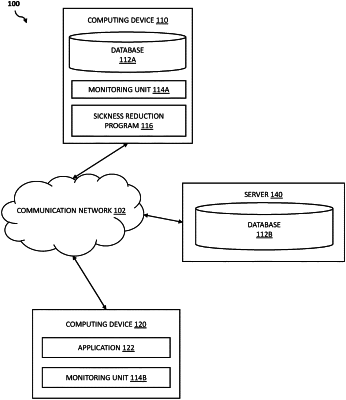| CPC A61M 21/02 (2013.01) [G02B 27/0093 (2013.01); A61M 2021/0044 (2013.01)] | 20 Claims |

|
1. A method for reducing a motion sickness episode experienced by a user, the method comprising:
detecting a motion sickness triggering environment associated with the user, wherein detection of the triggering environment utilizes a plurality of analyzed data associated with a plurality of biometric and environmental sensors, the environmental sensors obtaining environmental data associated with an environment where the user is located;
extracting a piece of environmental data associated with the detected triggering environment in further association with the motion sickness episode experienced by the user;
generating one or more responses associated with the motion sickness episode experienced by the user based at least in-part upon the environmental data and the extracted piece of environmental data associated with the motion sickness episode, the one or more responses including one or more specific motion sickness ameliorative techniques most effective for the user from a user profile history, the user profile history including the one or more specific motion sickness ameliorative techniques most effective for the user;
implementing the generated one or more responses associated with the motion sickness episode by utilizing an augmented reality (AR) device to reduce an episode of motion sickness experienced by the user via the one or more specific motion sickness ameliorative techniques most effective for the user; and
providing a piece of feedback associated with the generated one or more responses associated with the motion sickness episode, the piece of feedback including effectiveness of the one or more specific motion sickness ameliorative techniques most effective for the user.
|